Newcastle NB Power Cart: Get the Most from Your Label Printers
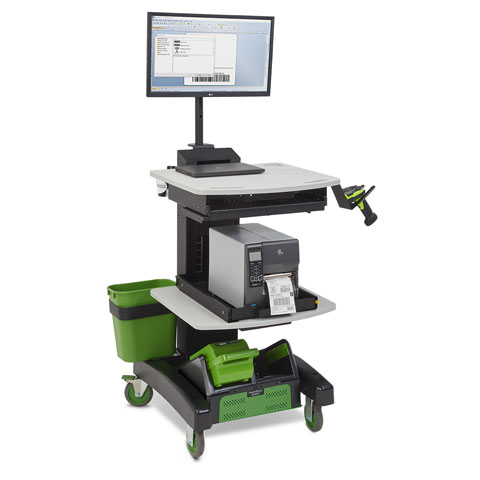
So you just invested in an industrial label printer for the warehouse. Before you dedicate a table and workstation where it will print labels in one place for eternity, read this.
Printer Placement is Key
Consider strategically placing your equipment on a Newcastle Power Cart, such as the NB300NU2, which is trusted by industry leaders like Walmart, DHL, Tesla, UPS, and Wayfair.
By integrating your label printer with a Newcastle Power Cart, you enable your employees to print labels directly on the pallet, effectively doubling output while significantly reducing errors. This seamless integration ensures that your employees have access to all resources, increasing productivity and reducing costly errors by up to 92%.
Newcastle NB Series Power Carts Pay For Themselves in 6 to 8 Months
The Newcastle NB300NU2 not only simplifies label printing but also streamlines workflow processes, resulting in a remarkable twofold increase in worker output. With this innovative solution, workers no longer need to travel to a distant printer, freeing up their time to focus on important tasks.
Investing in a Newcastle Power Cart like the NB300NU2 provides an excellent return on investment, with most businesses seeing payback within six to eight months of implementation. By consolidating resources and improving operational efficiency, the Newcastle Powered Cart proves to be a valuable asset in increasing throughput while lowering payroll costs.
Integrating your label printer with a Newcastle Power Cart will improve printer performance, period. This powerful pairing ensures increased productivity, fewer errors, and a faster return on investment, allowing your team to accomplish more while maintaining operational excellence.
For a detailed list of features and specifications, download the NB300NU spec sheet.
See the NB Powered Mobile Cart in Action
Contact us today to see how a mobile workstation from Newcastle can reduce redundant movement and inefficiencies in your operation.
For Improved Efficiency, Consider Newcastle’s PC Series Mobile Workstations
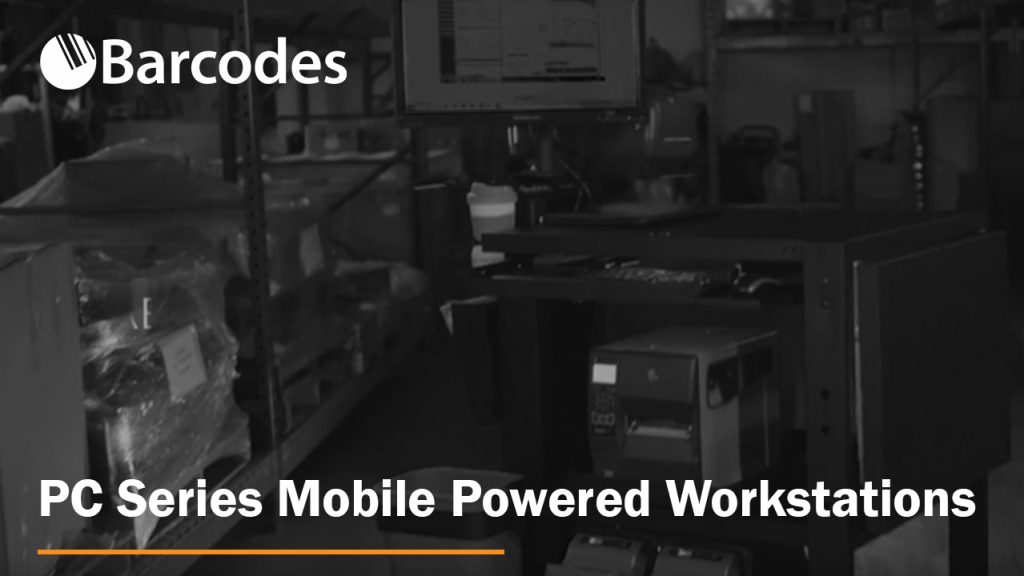
How do you increase throughput, shorten order cycle times, and maximize labor productivity, all while maintaining order accuracy in the warehouse? It doesn’t have to be a complicated, high cost challenge. A rugged industrial scanner and printer workstation often solves these issues on its own.
The problem: most dedicated workstations are stationary in one area of work. Imagine a workstation that you can easily cart around. With unparalleled mobility, PC workstations from Newcastle provide extra space for a laser printer, supplies, inventory, and more.
Newcastle Mobile Powered Carts let you tackle all these issues at the same time in a cost effective manner. By bringing your displays, mobile computers, and label printer to the pallet, you eliminate hours of back and forth in the warehouse.
Observe the PC Series Mobile Workstations in an Operational Environment
Key Features of the PC Series Workstation
- Mobile Workspace: Choose from a 30″ or 48″ tabletop, offering ample space for your laptop and paperwork
- High Carrying Capacity: Durable design with a remarkable 400 lbs. load capacity
- Precision Movement: Our specialized casters ensure smooth and accurate mobility, even when fully loaded
- Expandable Tabletop: Add our folding shelf accessory to expand the tabletop to a spacious 66″ x 24″ (11sf in total)
- Battery Options: Available in both lightweight Lithium and SLA battery variants
For a full list of detailed information, download the PC Series spec sheet.
Contact us today to see how a mobile workstation from Newcastle can reduce redundant movement and ineffiencies in your operation.
RFID Webinar: Improve Returnable Container Tracking with RFID
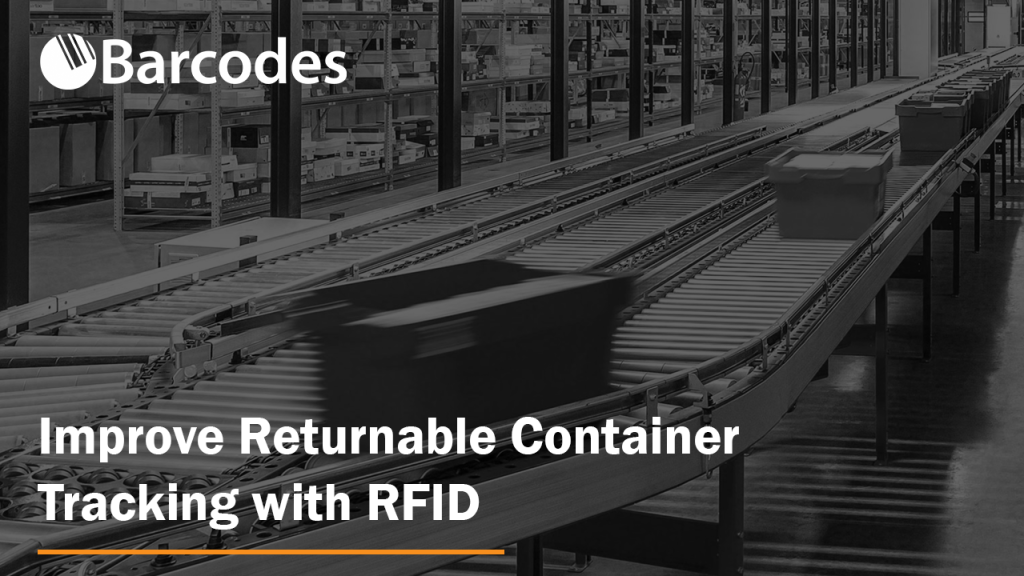
Webinar
Improve Returnable Container Tracking with RFID
Thursday April 20th 1:00-1:45pm Central
PRESENTED BY:
Christopher Vassilos – Senior Solutions Architect, Barcodes Group
Michael Daily – Senior Solutions Engineer, Impinj
RFID-Based Container Tracking
Upon delivery, it’s common for reusable containers to not be returned to the sender, with annual shrinkage rates often exceeding 10%. Keeping track of your Returnable Transport Items (RTIs) can be challenging, especially when logging their location depends on manual processes like scanning.
In this webinar, discover the benefits of RFID-based container tracking:
- Reduce the number of misplaced pallets, kegs, and boxes. Less new delivery assets need to be purchased, and shipments are not interrupted due to lack of totes.
- Track each asset as it leaves and returns to the warehouse, allowing you to determine its exact location immediately and whether they have yet to return.
- Calculate the flow of returnable assets to fully understand your shipping capacity for the present and future.
- Improve utilization of workers since it takes way less time to scan RFID tags than barcodes, due to its fully automatable reading without line-of-sight requirements.
Watch the Full RFID Webinar Recording
Improve Returnable Container Tracking with RFID

Returnable Transfer Items (RTIs), or returnable containers are critical assets for almost all manufacturing and logistics organizations. RTIs transport stock and commodities from one site to another. However, keeping track of your RTIs is a different story. Well-known manufacturers and logistics expert still often rely on manual methods, such as traditional scanning, spreadsheet, or pen and paper.
This leads to a major issue: inventory shrinkage.

Mismanagement of returnable containers owing to theft, unrecorded damage, or simply the inability of consumers to return empty pallets, kegs, and boxes costs a fortune.
How are Your Returnable Transfer Items Being Tracked Currently?
Barcode labels used to tag the cargo of a container during shipment are often non-permanent. Traditional barcode scanners and labels identify the contents of the container, but seldom provide reverse logistics tracking for the containers themselves.
Using permanent barcode labels as the foundation for a container monitoring system is not feasible. I know that might be strange to hear from a company called Barcodes, Inc. But scanning labels at various stages of the supply chain sometimes necessitates extra human effort, which is even more difficult when empty containers pile up.
One solution is to establish a tracking system utilizing modern asset tracking technology.
Reducing Yearly Inventory Shrinkage with RFID
“15% of all pallets in circulation vanish” or “20% of all packaging/equipment is lost owing to consumers retaining them for their own use or third parties removing them for their own use.”
SLS RFID 2016 Study
Inventory shrinkage is a major issue in the management of returnable transfer items (RTIs), which include all types of shipping containers, packaging, pallets, kegs, and boxes.
Shrinkage due to theft, unreported damage, or just consumers failing to return empty containers is a serious concern in this field.
Estimated annual shrinkage rates are anywhere from 3 to 9%. If you’re constantly replacing lost or stolen RTIs, the impact on profitability is a huge problem.
For organizations to decrease RTI shrinkage, RFID is appealing due to completely automated scanning without line-of-sight, as well as mass tag reading. The key advantage of RFID-based container monitoring systems is an improvement in container return rates. New containers are purchased in smaller batches and less frequently.
What Data Can Be Tracked with RFID Tags?
Integrating the RFiD Discovery system with your ERP system enables company-wide visibility of your RTIs, ensuring that essential assets are accessible at the relevant locations to fulfill any transportation request.
Exactly what the RFID ultimately tracks depends on your unique tracking requirements. Here are some examples of the depth of data you can store in a small RFID tag:
- Container Name
- Size
- Location
- Weight
- Item Quantity
- Container Properties
User memory on tags stores data. The serial number field can be pre-programmed or user-assigned.
The air-interface protocol standards for passive HF and UHF tags, such as UHF EPC Gen 2, define basic functions like read-write and which memory banks or blocks can be written to. Reader manufacturers include these low-level commands with higher-level subroutines in their software development kits for application developers.
How to Use RFID to Tag RTIs
RFID labels are long-lasting and more durable than traditional labels. RFID tags attach exceptionally well to returnable cargo and resist machine washing operations as well as harsh elements for much longer.
Any RTI equipped with an RFID tag can be detected by a small number of strategically located readers. The location data is delivered back to the central RFID Discovery database, where it may be evaluated.
This database allows you to discover how many RTIs have been sent to a specific supplier or customer, so you know which trade partner to approach when requesting a return.
When shipping containers are in range of an RFID reader, the information on the tags can be automatically acquired using a wide variety of methods:
- Fixed reader installed at a warehouse entrance or loading dock
- A mobile reader installed on a forklift
- Handheld reader brought inside a business partner’s facility for rapid inventory
What are the Main Advantages of Using RFID for Returnable Asset Tracking?
There are several advantages of using RFID to track returnable assets.
1. Recoup Billions of Dollars in RTI-Related Losses
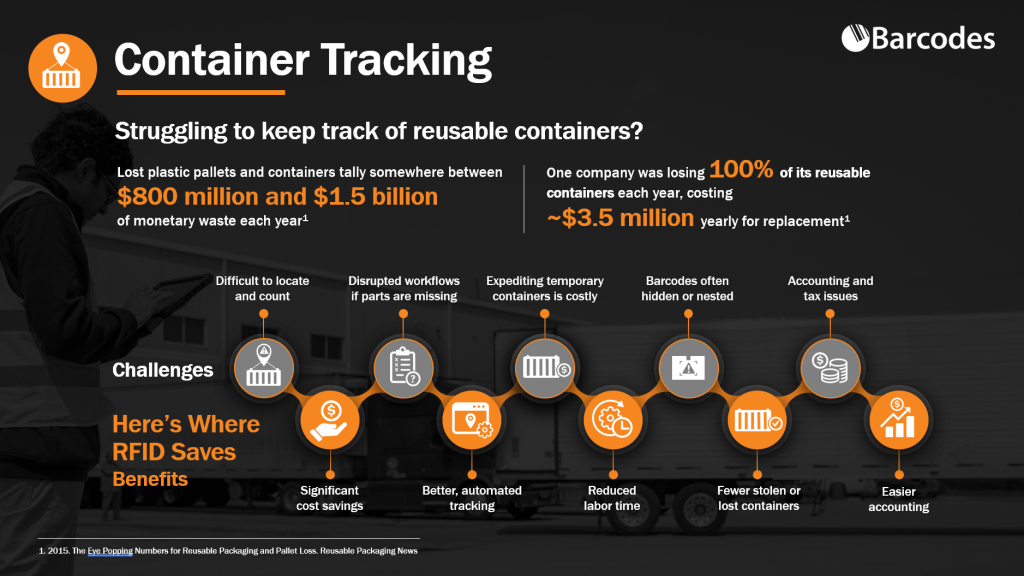
Reusable assets are returned to the sender after delivery, usually full of new goods and not empty. Entire industries are dedicated to capitalizing on reverse logistics and maximizing the value of containers.
So why do we pay far less attention to reusable assets compared to sold commodities and container space? In order to get a bird’s eye view of costly shrinkage areas, your immediate shipping capacity, and overall supply chain health, it’s critical to assess the flow of returnable assets as well.
If RTIs arrive in the incorrect place or are lost, the transfer of products becomes difficult or impossible, thereby causing delivery delays. And massive container replacement costs.
These misplaced assets represent billions of dollars in losses, since new delivery assets must be acquired. We will say again: RFID saves billions of dollars.
2. Track Every Asset Location With a Detailed Evidence Trail
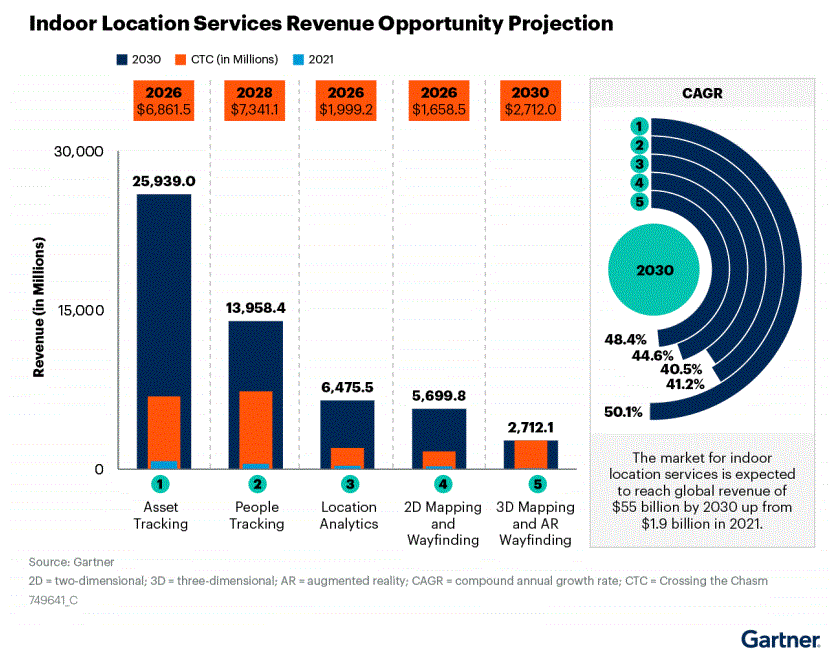
While we like to imagine most people are honest and good by nature, the reality is that customers and suppliers are not going to eager to assist when the subject of locating your missing valuables is brought up. Tough luck.
Instead of playing the blame game, utilizing an RFID system to track each asset as it leaves and returns to the warehouse allows you to instantly establish its specific location, and whether it has yet to return.
This goes for both goods sold as well as the RTIs carrying them. Put another way, your returnables are much more likely to return.
3. Increase Visibility of Container Locations, Available Stock, and Overall Condition
Though shipping should be a precise science, we know that’s not always the case.

Businesses depend on RTIs everyday, but lack visibility over the availability, location, and quality of their RTIs.
When organizations incorporate careful pallet monitoring, tote box tracking, and stillage tracking, it’s much easier to manage a large pool of RTIs without bleeding money. Additionally, there is no longer a need to keep just-in-case containers on the sidelines, because of increased visibility into the “who, what, where, and how many?” questions.
4. Improve Labor Utilization at Every Level of the Supply Chain
Scanning RFID tags takes substantially less time than scanning barcodes. Similarly, RFID is a more appealing identifying solution for reusable assets since users do not need to manufacture new barcodes or print new labels.
Logistics and operational leaders can simply re-encode the same RFID tags again and again without increasing headcount or allocating redundant processes to busy workers.
Lastly, RTLS on RFID can significantly reduce the amount of time workers spend searching for specific inventory. In a field such as healthcare, nurses estimate they spend at least an hour per shift finding equipment. That really adds up when looking at overall labor utilization.
Evaluating and Deploying an Effective RTI Tracking System
Tracking RTIs with RFID helps prevent your assets getting lost or stolen, reduces disputes between trading partners, enables rapid inventory cycle counting, and quickly identifies shortages. Your organization could be saving billions of dollars.
Barcodes, Inc. is your trusted RFID partner and integrator. Contact us when you are ready to elevate your RTI management and discover the magic of RFID tracking. It’s easier to deploy with a partner you can trust.
Newcastle Mobile Powered Carts: Getting Products to Customers Faster
These are tough times to run a warehouse. How do you increase throughput, shorten order cycle times, and maximize labor productivity, all while maintaining order accuracy?
Newcastle Mobile Powered Carts let you tackle all these issues at the same time in a cost effective manner. By bringing your printer to the pallet, you slash time walking.
What’s more powerful than a rugged industrial scanner station in the warehouse? One that you can easily cart around thanks to modular power carts from Newcastle.
See the NB Mobile-Powered Carts in Action
Contact us today to see how you can initiate a warehouse solution for maximum productivity and efficiency.
Maximizing Return on Investment When Purchasing Forklift Mount Technology

Keeping up with and knowing how to best leverage both the latest forklift technology with the best docking and mounting solution in today’s Material Handling and Distribution industry is at the core of maximizing a profitable operation. Prioritizing the importance of return on investment (ROI) as a key deliverable in a technology/docking/mounting purchase decision is critical in balancing today’s cost with its’ future value or ROI. Understanding first how to calculate labor productivity and then reviewing 4 important advantages that improve productivity will ultimately improve the bottom line. They are:
- Increased Capabilities and Performance
- Increased Flexibility
- Improved Technology Safety and Performance
- Improved Overall Productivity
It starts with calculating your current process labor productivity using the mathematic calculation detailed here:

Once labor productivity is identified, researching both the best technology options available with the best docking and mounting solution that allows improved labor times is the next step and where Barcodes, Inc. adds immense value. As a full-service technology provider, Barcodes, Inc.’s core competency is delivering convenient, complete and effective solutions.
This is accomplished by understanding individual needs and making recommendations based on delivering on these four advantages that result from improved technology/docking/mounting solutions.
Increased Capabilities and Performance – The number one driver in your decision to initially purchase or upgrade your current technology/docking/mounting configuration is understanding not just the technology benefits, but the benefits of your docking and mounting solution. This is as critical a component as the technology itself. Gamber-Johnson, one of Barcodes, Inc. long time technology docking and mounting manufacturing partners, offers commercially designed, rugged, reliable, and responsive solutions specifically for Material Handling duty cycles. It is this combination that fully maximizes the results of increased capabilities and performances.
Increased Flexibility – Improving user flexibility through unique design features and capabilities of technology/docking/mounting solutions is also a key driver to improved ROI. Offering you a choice of a standard mounting solution or designing a personalized mounting solution (if required minimum order quantities are met) is something Barcodes, Inc. representatives and Gamber-Johnson offers. Working together, we can design, test, and build a custom docking/mounting solution that can greatly enhance the flexibility you need to improve productivity while providing you a simple, convenient purchasing and install process saving you precious time.
Increased Technology Safety – Protecting technology when installed in the dock and mount is critical. Primary vibration passing through a forklift when encountering an uneven surface is magnified immensely and directly affects a docking/mounting combinations ability to absorb severe vibration without failure. Why a rugged, reliable, responsive design to meet the harsh criteria of a typical material handling duty cycle is critical, especially when making a long-term purchasing decision. To maximize productivity and ultimately ROI, dock/mount failure is not an option.
Proving Overall Productivity – Real-time testing of the best identified technology/docking/mounting combination and comparing the improved process timing using it to original labor productivity data captured quantifies time savings and ROI increases. Multiplying that number into the future cements payback time and the residual incremental profit thereafter completing the improved ROI exercise. It all starts by simply contacting your local Barcodes, Inc. representative to understand, develop and ultimately provide you with the complete turnkey solution to your team’s specific needs and requirements to maximize ROI and deliver incremental revenue. Contact Barcodes, Inc. for a free consultation today.
ICYMI: Increase ROI with Asset Tracking
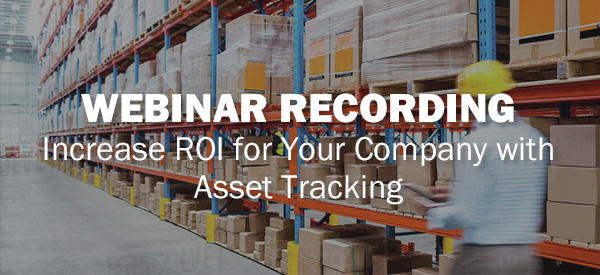
In case you missed our webinar today, click on the video below and learn how Barcodes, Inc. and Wasp can help increase your ROI with asset tracking solutions tailored to your business. You can also review this guide on the ROI of asset tracking (PDF).
Key Takeaways Include:
- Reduce the amount of manual labor involved in asset management, unnecessary expenses on duplicate assets, and track maintenance and depreciation of your assets
- Get the most from your fixed asset purchases with a centralized management solution
- Asset management solutions are affordable and suitable for all types of companies and its ROI can be easily measured right after implementation
If you have any questions about asset tracking, please contact Raul Cepeda, VP of Product Management and Strategic Alliances, at [email protected] or (312) 765-6881.
Increase ROI with Asset Tracking

Feb. 26, 2020 11:00 AM (Central Time U.S and Canada)
Join Barcodes, Inc. and Wasp to learn how investing in an automated and reliable asset management solution can help increase your company’s ROI. Wasp creates complete fixed asset tracking solutions tailored to your business. Their easy-to-use asset tracking software will automate you organization’s fixed asset tracking for improved check-in/check-out processes, faster auditing and error-free reporting.
Key Takeaways Include:
- Reduce the amount of manual labor involved in asset management, unnecessary expenses on duplicated assets and track maintenance and depreciation of your assets.
- Get the most from your fixed asset purcahse with a centralized asset management solution.
- Asset management solutions are affordable and suitable for all types of companies and its ROI can be easily measured right after its implementation.
Presented By:
Randy McAfee – Sales Manager at Wasp Barcode
Raul Cepeda – VP Product Management & Strategic Alliances at Barcodes, Inc.
By registering, you submit your information to Barcodes, Inc., who will use it to communicate with you regarding this event and other services.
Why Automate Your Picking Solution?
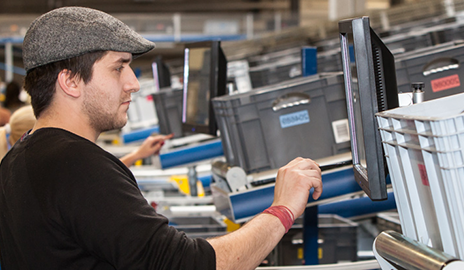 Being right 99% of the time seems like a quality percentage – until you calculate what that 1% actually costs an organization.
Being right 99% of the time seems like a quality percentage – until you calculate what that 1% actually costs an organization.
- Babies born annually in the United States = 3,932,181
- At 99% accuracy 39,322 babies are sent home to the wrong parents
- Prescriptions filled annually in the United States = 4.27 billion
- At 99% accuracy 42.7 million Rx are filled incorrectly
- Distribution Centers pick 250 million units annually
- At 99% accuracy 2.5 million units are picked incorrectly
- That’s almost 7,000 units picked incorrectly every day if working 365 days/year
- At 99% accuracy 2.5 million units are picked incorrectly





